Table of contents
Know all about God Shiva!
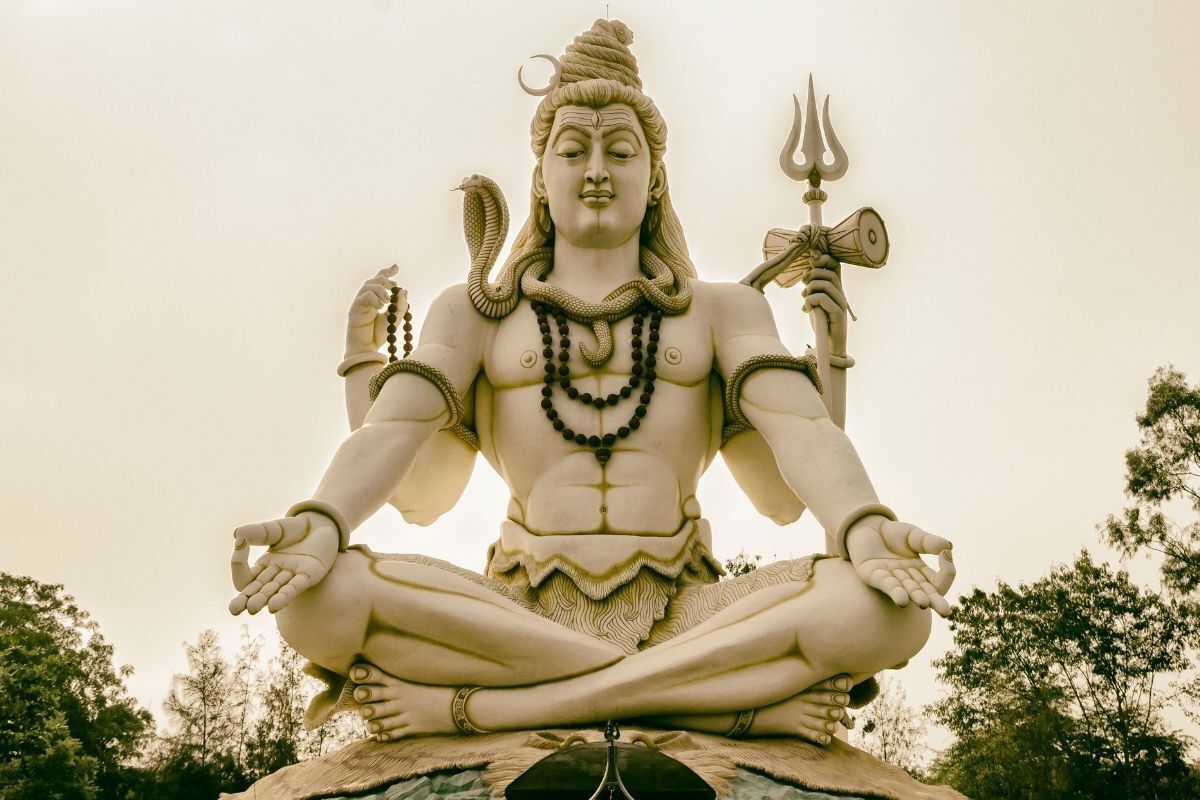
In Hinduism, a religious tradition originating on the Indian continent, Shiva is the superior God, known as the one who brings life energy. He is beneficent and has the ability to destroy to bring something new. The forces of destruction and regeneration are his main characteristics. .
According to Hindu literature, the God Shiva is part of a Trinity composed of Brahma, Vishu and Shiva. In equivalence to Christian literature (Catholicism), the Hindu Trinity refers to these three gods as the "Father", the "Son" and the "Holy Spirit", the supreme beings who direct life and who are to be respected for their knowledge and powers.
The God Shiva is also recognized as the founder of yoga for his ability to generate physical, mental and emotional changes. Know this Hindu God, his origin, history and main characteristics. Read on and learn more!
Meeting the God Shiva
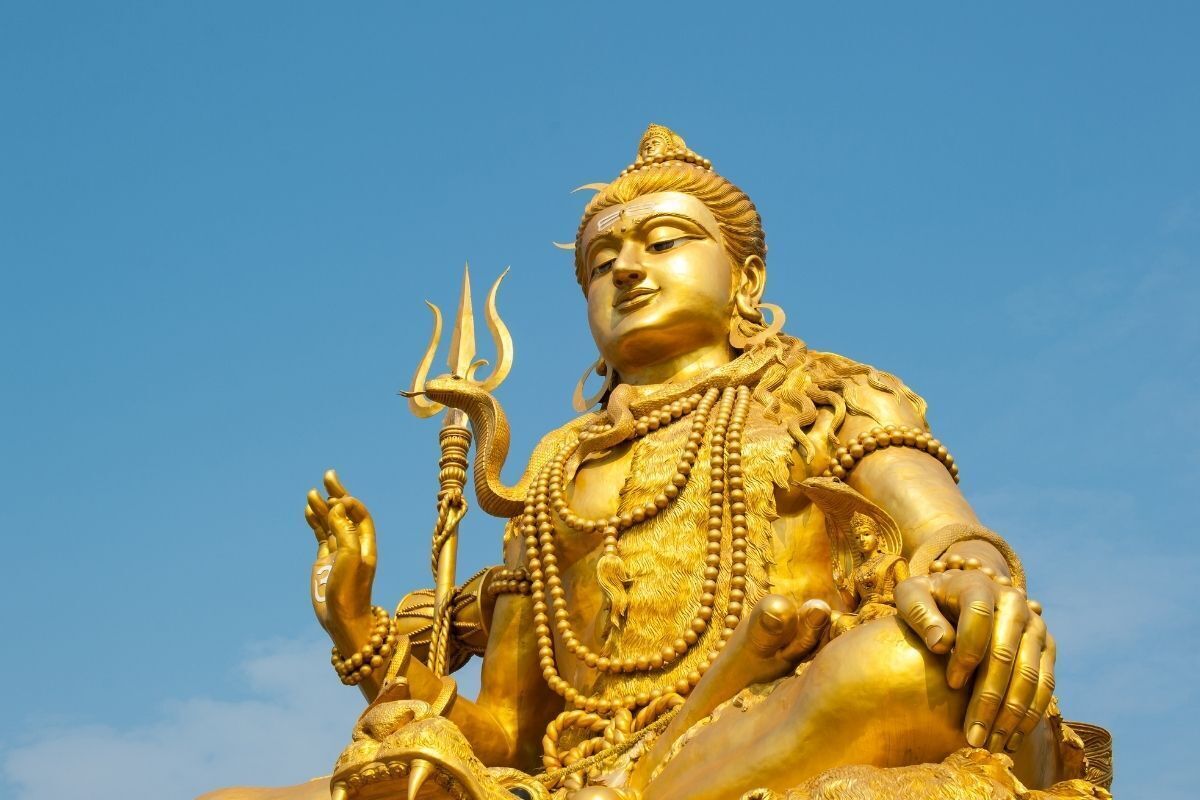
In India, and in several other countries, it is still believed today that the God Shiva has powers of destruction and regeneration and that these are used to end the daydreams and deficiencies of the world. With this, the paths would be open for favorable and propitious changes.
In Hinduism values, the God Shiva's action in destruction and regeneration is not by chance, but directed and constructive. Therefore, in many literatures, he is commented as the God of both good and evil, combining these contradictory forces. Understand more about God Shiva and his teachings. Check it out!
Source
The figure of Shiva already appears commented, according to religious traditions of India, at the moment of creation of the universe. Moreover, he has a presence in the development of humanity and all that surrounds it, as a generator of everything that makes up the planet, as well as a great sower hidden behind the scenes, but helping in the whole.
The God Shiva also appears at the end of everything, as the power of destruction, but also of renewal and transformation. Hindu literature believes that the universe has forces of regeneration, which occur in constant cycles, every 2,160 million years. The power of destruction is of the God Shiva, who is also the facilitator for the creation of the next essence of the universe, recomposing it.
History
According to the story contained in ancient scriptures of the religious traditions of India, the God Shiva had the habit of coming down to Earth in his human form. Usually, he appeared in the body of a wise practitioner of yoga. Therefore, until today, he serves as a great example for all who practice the art of meditation.
Although the purpose of his presence on Earth was to understand humanity and free himself from the pleasures and indulgences of human flesh, Shiva eventually aroused the annoyance of the king of demons, who sent a snake to kill him. He tamed the snake, transforming it into his loyal squire and began to use it as an ornament around his neck. New attacks arose against Shiva, and all were overcome.
Accounts of the veneration of this God and all his actions date back to 4,000 years before Christ, times when he was also referred to as Pashupati.
This name is a combination of "Pashu", which means animals and beasts, and "Pati", which means master or lord. In his abilities, was present the ability to interact with various beasts, externally and internally, and transcend his own existence.
Visual characteristics
The most widespread image about the God Shiva consists of the representation of a man with four arms, sitting with his legs crossed. The two main arms are over his legs.
The others, on the other hand, carry information that help to understand all the powers and actions of this God towards mankind. In the right hand open upwards, for example, there is the representation of the blessing and in the left hand the presence of a trident.
What does Shiva look like?
In human form, some representations of the God Shiva appear with the image of a man. In books and color representations, his face and body are always painted with the color blue. He has long legs and shapely arms. The thorax is naked and also well outlined. In all the arts, he is always represented with evidence for the muscles, both the lower and upper parts.
The eye of Shiva
The God Shiva is also represented with a third eye drawn on the forehead, in the middle of the two eyes already existing in every human being. According to mythological legend, the third eye of Shiva has as symbolism the configuration of intelligence and lucidity. Through this eye, Shiva would be able to release an uncontrollable energy, causing the destruction of everything.
What does the God Shiva represent?
Even with his destructive face, Shiva is usually represented as a calm, peaceful and smiling person. In some cases, he also appears as half man and half woman, in the same body. His representations bring the discussion of the search for complete and perfect happiness.
Even with a dark side and turned to the leadership of evil spirits, the God Shiva represents an indomitable passion, which can represent goodness, protection and a benevolent being. But he is also connected with time, for his destructive and transforming actions of everything around.
Shiva and Yoga
In Yoga beliefs and values, it is believed that the God Shiva has been the percussor of meditation and the teachings related to this art. This is because he came to Earth to try to free his soul from limitations, possibly generated by the body or even by living with other humans. Thus, the techniques employed by Shiva are used until today in yoga and passed from generation to generationgeneration.
Relationship with God Shiva
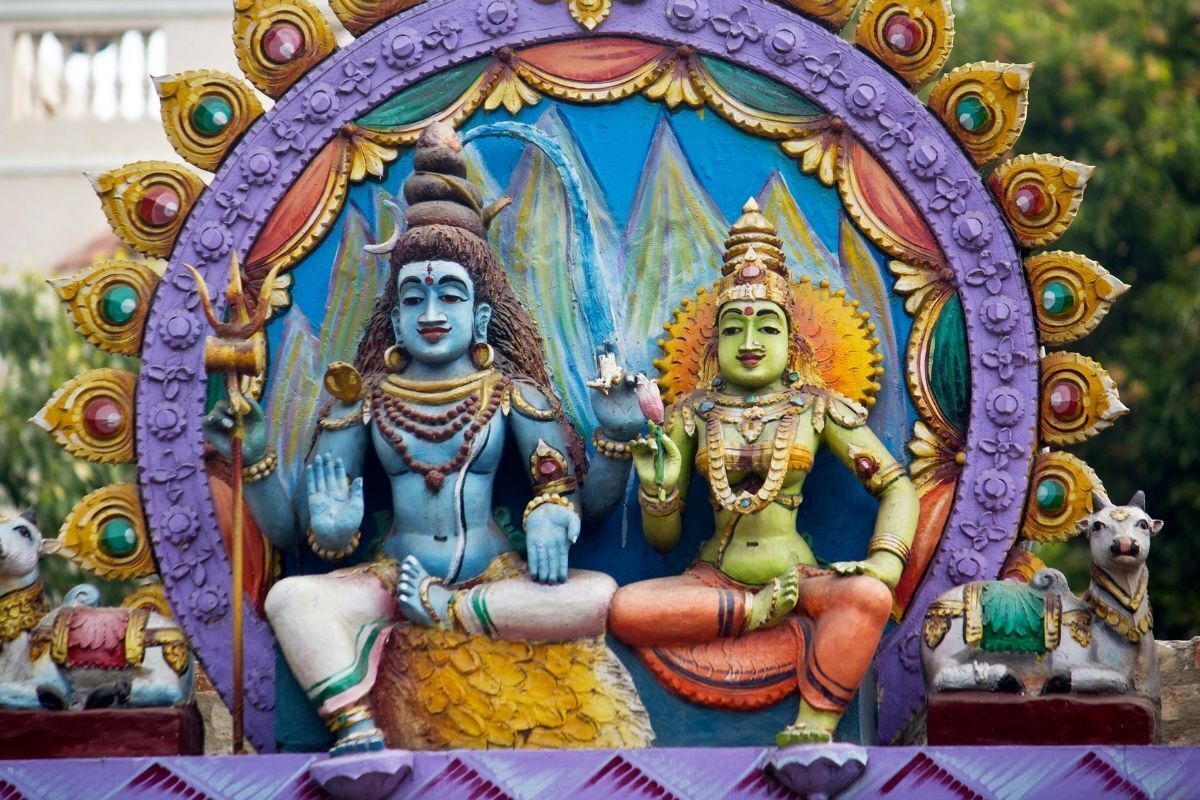
Shiva has a relationship with other gods and characters in the religious history of India. As a result of these interactions, teachings and or milestones in Indian history were born, which are, nowadays, respected and used as full knowledge of human existence. Understand better the relationship of Shiva with other Hindu figures and learn more about this God. Read on!
Shiva and the Hindu Divine Trinity
The Hindu Trinity is composed of the three principal figures of Hinduism, the gods Brahma, Vishnu and Shiva. These gods symbolize the generation of humanity and all existence, conservation and development, and also destruction and transformation, respectively in this order.
Therefore, to understand the Trinity is to recognize that each one of them plays a marked role and has specific powers in the world.
The God Brahma is the first and creator of the whole universe. Vishnu is the God who maintains and makes the preservation. The God Shiva is the one who has the forces and powers to destroy but also to remake the universe, like a new chance or a new attempt. In this way, the trinity represents the complementary powers between these three gods.
God Shiva and Parvati
It is believed that God Shiva was married to Parvati, who in some scriptures also appears under the name Kali or Durga. Parvati was the reincarnated daughter of God Daksha, who did not approve of her marriage to Shiva. On his celebrations, God Daksha performed a ceremony with sacrifices and offerings to all the gods but God Shiva.
According to the legend, Shiva was enraged by Daksha's disapproval and during the ceremony, Parvati took upon herself the pains of her husband and threw herself into the fire in sacrifice. Shiva, distraught, reacted by immediately creating two demons in order to end the ceremony.
The demons tore off Daksha's head, but on the pleas of the other gods present, Shiva turned back and brought Daksha back to life, but Shiva transformed Daksha's head into a ram's head, and he came to exist as half man and half beast. Parvati also came back to life reincarnated by remarrying Shiva.
God Shiva, Khartikeya and Ganesha
From the union of Shiva and Parvati, two sons were born, the god Ganesha and the god Kartikeya. According to the story, Ganesha was generated from earth and clay with the responsibility of keeping his mother company and protecting her in Shiva's absence while he was in his meditation practices.
Legend has it that one day, returning from his pilgrimages, Shiva did not recognize the boy who was standing outside his mother's room. So he invoked his demons who tore Ganesha's head off, killing him.
The mother, knowing the fact, went to the meeting shouting that it was indeed the son of both. Shiva, facing the mistake, sent for a head to recompose the son, but the closest one was of an elephant. Thus, until today Ganesha appears with the head of an elephant in his representations.
About the god Kartikeya, there are several versions of stories, but the most told is that he was known to be the God of War, fought as a great warrior. As part of Indian numerology, the number 6 appears constantly in the performances of this god. Thus, there are six vices by which man can be susceptible: sex, anger, passion, jealousy, greed and ego.
Symbologies of God Shiva
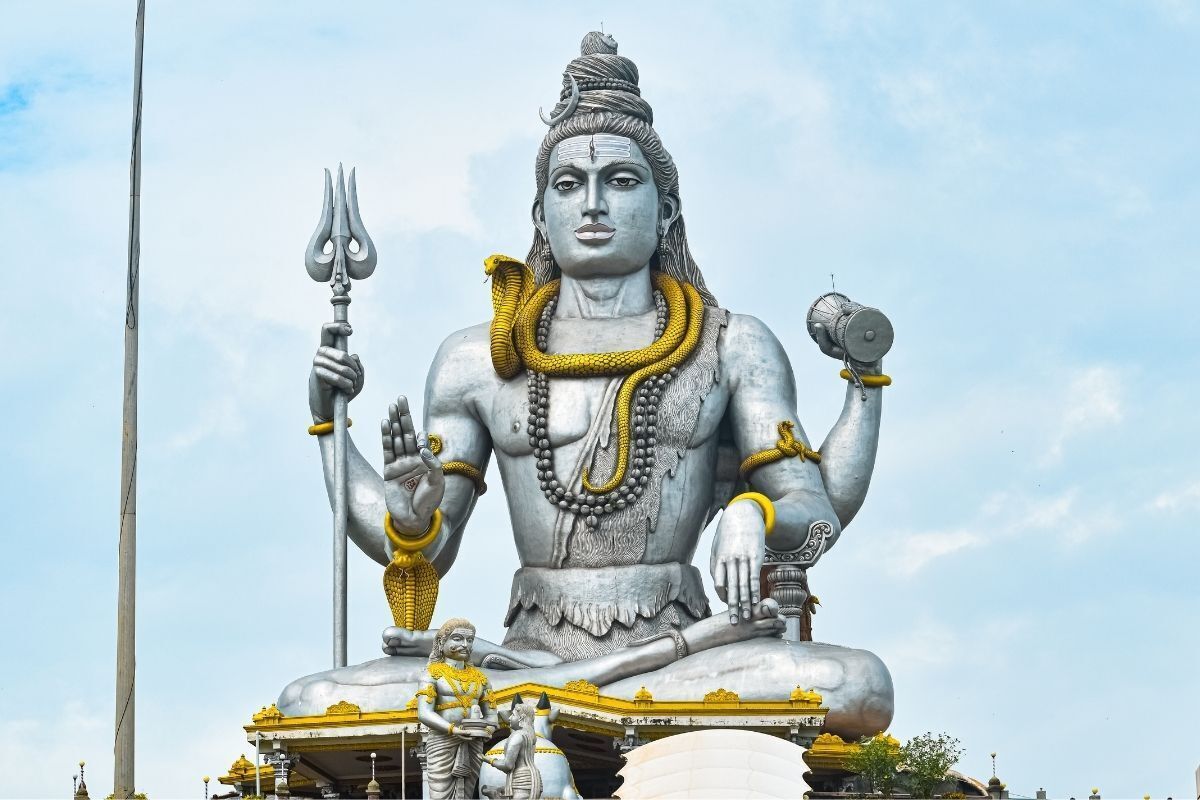
The history of Shiva is permeated by facts that involved adventures and situations that allow us to create the image of his characteristics, with skills and abilities, and the way he lived and passed his knowledge to humanity. Check out a selection of symbologies marked by the God Shiva in history and understand more about his motives and teachings.
The trishula
In most illustrations representing Shiva, he appears holding a trident or it is present composing the image. This trident is known as trishula, a weapon carried by Shiva that has the number 3 as symbolism. Therefore, each tooth of his trident represents one of the qualities of matter, namely: existence, firmness and balance.
In some other literatures, the trishula also represents the past, present and future. Other gods of Indian mythology also carry a trident, representing their ability to fight and face challenges, whether earthly or otherwise.
The snake
The serpent, sent by the king of demons to finish off Shiva, is tamed with the trident (trishula). Throughout his story, Shiva carries the serpent around his neck as an adornment, an ornament. The use of the serpent for this purpose is directly linked to the representation of ego and the need to display one's achievements and accomplishments.
In other passages, the serpent being a deadly cobra and defeated by Shiva, denotes the God's immortality symbolism, for once he defeated and imprisoned the beast, he gained the ability to become immortal.
Jata
In most representations of images of Shiva, one can notice that on his head there is the presence of a kind of water jet. In India, is located one of the largest rivers in the world in length: the Ganges River. According to Hindu symbolism, Shiva's hair controls the waters of this river, taking its purity to all Indians.
Lingam
Found in only one place in the world, the Narmada River, the Lingam is a sacred stone within the Indian religion. The river where it is found divides the boundaries between northern and southern India. It has colors ranging from brown, gray and red with small spots. In addition, the word "Lingam" is a symbol that is linked to the God Shiva.
Thus, Indians believe that the stone sharpens the vivacity and levels of fertility energies. Therefore, the stone also represents sexuality within Indian beliefs, without making reference to sex, but rather to the attraction that can exist between two people and how they realize it.
Damaru
The damaru, in Indian culture, is a drum in the shape of an hourglass. It is commonly used in celebrations in India and Tibet.
According to legend, it is by using a damaru that the God Shiva composes the rhythm of the universe, as in a dance. For this passage, Shiva is also known as the God of Dance. If ever he stops playing the instrument, to tune it or get back to the rhythm, the universe falls apart, awaiting the return of the symphony.
Fire
Fire is a powerful element that represents alteration or conversion. Therefore, it is directly linked to Shiva. In Indian literature, nothing that passes through the power of fire will remain the same. As examples: the food that, when passing through fire, is modified and can change in color, shape, consistency and taste, also the water that, when passing through fire can evaporate.
The relationship of fire with Shiva is in the concept of transformation, since he is the God who invites all who follow him to change. In yoga, fire is represented by body heat which, when produced, can be channeled to release the body's own limits and help in the process of transmutation.
Nandi
The bull known as Nandi is the animal that serves as mount for the God Shiva. According to the story, the mother of all cows began to give birth to many other white cows, in an absurd quantity. The milk coming from all the cows flooded the house of Shiva who, disturbed during his meditations, struck them with the power of his third eye.
To calm Shiva's anger, he was offered a perfect bull and recognized as a unique and wonderful specimen, Nandi, the son of the mother of all cows. So, the bull symbolically represents the protection for all other animals.
The crescent moon
The phase changes of the moon represent the constant cycle of nature and how it permeates the continuous changes that all humans are susceptible to. In the images depicting Shiva, one can notice a crescent moon in his hair. This usage signifies that Shiva is beyond the emotions and moods that can be influenced by this star.
Nataraja
The word Nataraja means "King of Dance". In this way, using his dance, Shiva is able to create, maintain and destroy the universe. Through the use of the damaru his drum, Shiva dances marking the eternal movement of the universe. According to legend, Nataraja performs his dance by dancing on a dwarf demon, which represents the overcoming of darkness and the possible passage from the divine to the material.
Pashupati
The name Pashupati is given to one of the incarnations of the God Shiva, mainly worshipped in Nepal. In this incarnation, the God would have returned as the lord of all animals, represented with three heads to be able to be aware of the past, the present and the future. Thus, the image of Pashupati is also seated cross-legged in a meditation position.
Ardhanaríshvara
In many images, Shiva is represented as a man, but it is possible to notice that his right side is more masculine than his left side, due to the presence of the serpent, the trident and other artifacts closer to the masculine universe.
The word ardhanaríshvara represents the union of these two aspects, between the masculine and the feminine principles.
Further information about the God Shiva
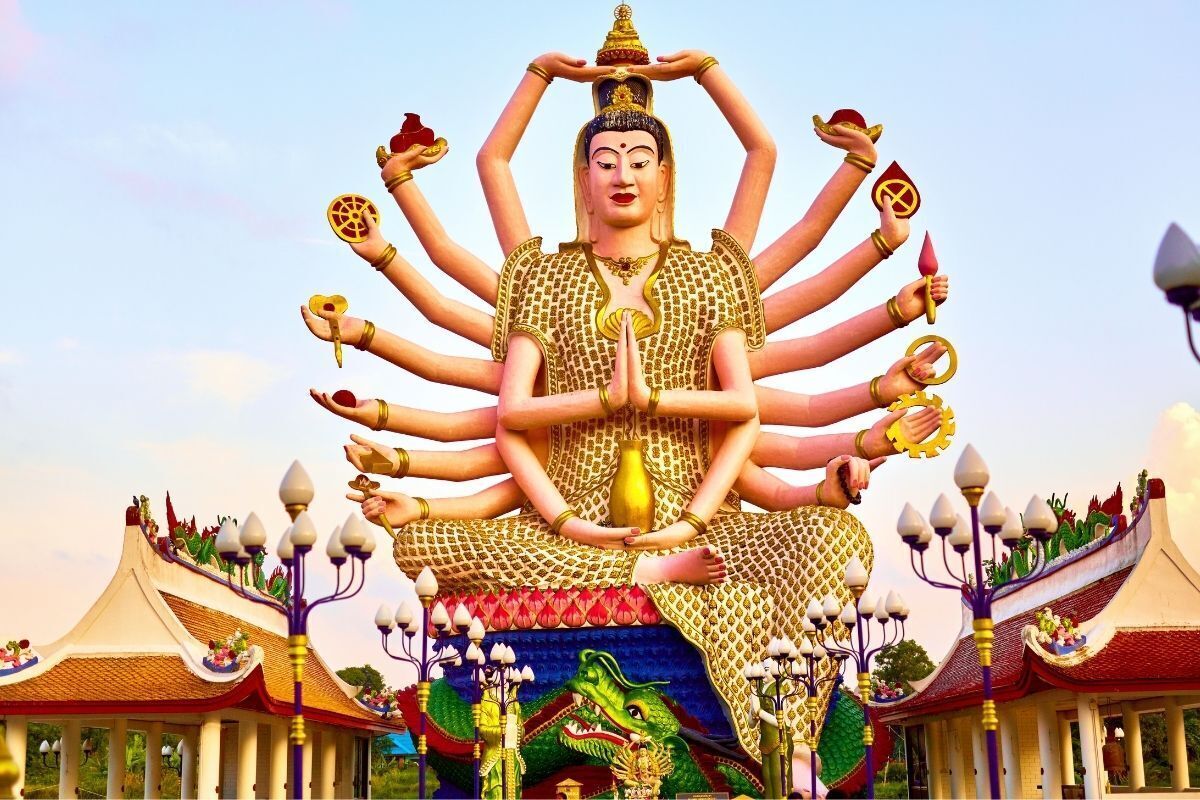
Shiva is present in several cultures, but with different representations. In the Asian culture, the God Shiva appears with specific details and is usually naked. Even though he is still represented with several arms, he appears with his hair tied in a bun or with a quiff.
The crescent moon, which in Indian representations is attached to the hair, appears in some cultures as a headdress together with a skull. On her wrists, she carries bracelets and, on her neck, a necklace of snakes. When standing, she appears with only one leg, the left one. The right leg appears bent in front of the knee.
In each culture, the composition of the image of the God Shiva and his actions carry symbologies that serve as guides for the people who follow and study his teachings. Read on and get to know some other passages of the life of this God in other cultures, learn his prayer and his mantra. Check it out!
The Great Night of Shiva
The great night of Shiva is a festival held every year by the people of Indian culture. It occurs on the thirteenth night of the Indian calendar. It is a night of prayers, mantras and vigil. The Hindus practice spirituality and hold a great celebration, especially in temples of worship to the God Shiva.
How to connect with God Shiva?
Meditation is a good way to connect with the teachings of God Shiva. You don't need to be in a temple or a sacred place in Indian culture for this connection, just create your own environment. According to the legend, the connection should start with God Ganesha, who will open the access paths to Shiva.
So, it is worth learning mantras and prayers to Ganesha and elevate your thoughts through meditation. So, practice meditation by clearing your thoughts and directing your mind towards transformation and all the teachings of Shiva, because the practice of yoga and meditation helps in connecting with the energies of this God.
Altar for God Shiva
To create an altar to worship or honor the God Shiva, you will need to choose a good space in your home where you know the energies will flow. It can be in the corner of the bedroom or in a private space in the living room. Select objects that make sense to you and that connect with your intention.
In addition, you can choose a statue of Ganesha and also one of the God Shiva, incense sticks and bells or small musical instruments that connect you with the music of the universe. Remember to illuminate the altar using a lamp or even candles that, once lit, should go out on their own, without your intervention.
So, set aside good moments to be at your altar and clean your mind, seeking the guidance of Ganesha and the teachings of Shiva. Practice meditation on your altar and make this environment increasingly complete with positive energies and good vibrations.
Mantra
Mantras are combined words or syllables that, when pronounced constantly, can help in concentrating the mind and interact with the energies of the gods. The most used mantra for connection to God Shiva is OM NAMAH SHIVAYA which means: "I honor Lord Shiva".
It is used to demonstrate to God Shiva that his power is acknowledged and that one stands in reverence before all his power, with welcome to life from his worship. So use this mantra when standing before his altar and meditate by repeating it aloud or mentally.
Prayer to God Shiva
I unite today with the greatness of Shiva to direct me.
To Shiva's power to protect me.
To Shiva's wisdom to enlighten me.
To Shiva's love to set me free.
To Shiva's eye to discern.
In Shiva's ear to listen.
Shiva's word to clarify and create.
To Shiva's flame to purify.
Shiva's hand to shelter me.
To the shield of Shiva to defend me against traps, against temptations and vices.
With his trishula of protection in front of me, my back, on my right, on my left, above my head and below my feet. With the grace of the devas and devis, I am under the protection of Lord Shiva."
Shiva is also known as a destroyer and regenerator of life energy!
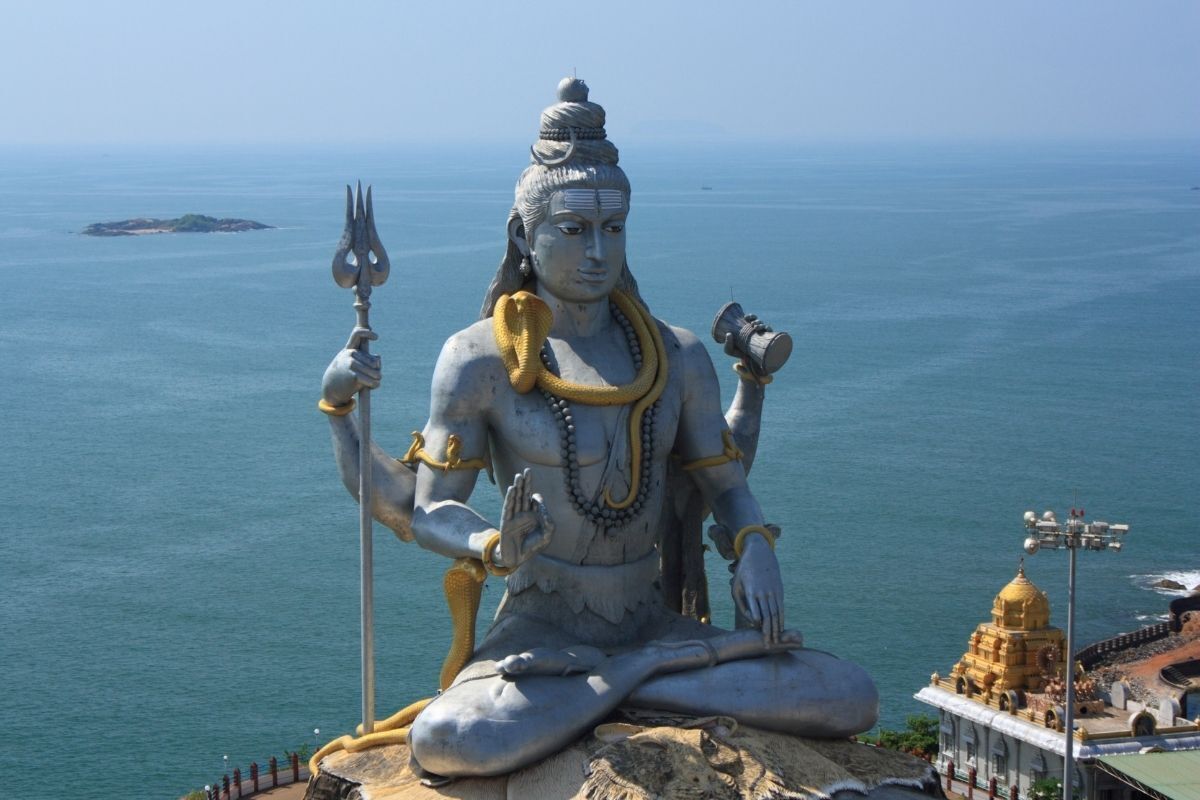
At the same time that he is recognized as the creator for being in the trinity as the third god, Shiva has the supreme look, because he knows the creation, knows how it was maintained, organized and is able to destroy it to promote the transformations and changes necessary for a better universe.
For having this complete vision, Shiva is also known for being able to end vital energy, but always with the intention of regenerating it, leaving it in an even stronger state. Moreover, the metaphor of his action with the universe can be applied to people's problems and to everything that permeates the earthly world.
In the face of problems, through meditation, prayers and spirituality, the human being is able to connect with the creative forces and convert them so that they can transform themselves. Positive thoughts and attitudes are great boosters, but above all, the belief in oneself and in one's power of transformation, is the main teaching of the God Shiva. Think about all this and practice!

